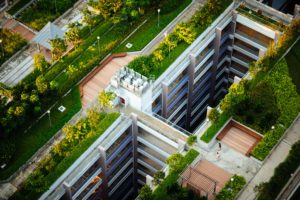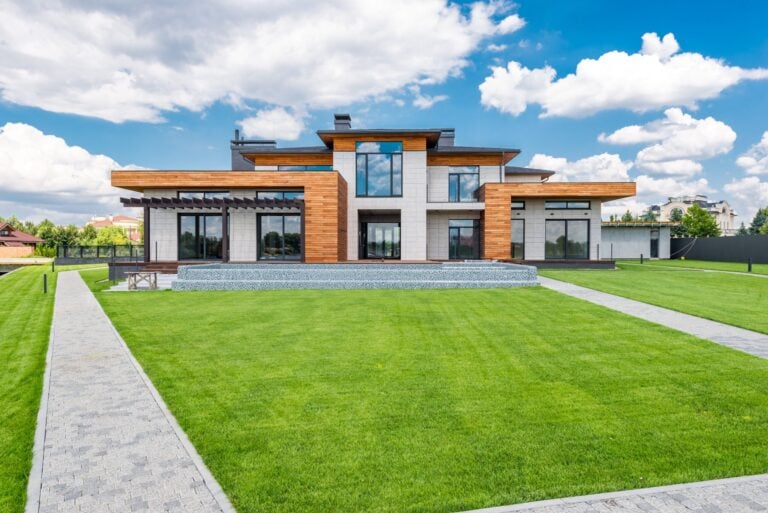Global Sustainability Trends In Commercial Real Estate
 The real estate industry must reduce carbon emissions by 36% to support staying within the 2 degrees Celsius threshold by 2030. If you’re in the commercial real estate industry, you need to adopt a commitment to sustainability.
The real estate industry must reduce carbon emissions by 36% to support staying within the 2 degrees Celsius threshold by 2030. If you’re in the commercial real estate industry, you need to adopt a commitment to sustainability.
But, how are global commercial real estate businesses committing to a more sustainable future.
Keep reading as we discuss global sustainability trends in commercial real estate, including intelligent building management, innovative building materials, and new climate commitments. This guide will give you the latest scoop on sustainability in the commercial real estate industry.
Sustainability Trends In Commercial Real Estate
Suppose you’re in the commercial real estate industry. In that case, you need to maintain an awareness of global sustainability trends that can help you streamline energy costs and reduce your carbon footprint. Here, we will discuss some of the latest global sustainability trends in commercial real estate.
Smart Building Management Triggers
Cloud-based security technologies enable businesses to reduce their monthly overheads and decrease their carbon footprint. A cloud-based access control system comes with open API integrations that allow it to act as an energy-saving tool.
Touchless cloud-based access control uses digital access keys stored on users’ mobile devices. The user must simply wave their hand to enter the building, which will trigger remote communication with their mobile device, allowing them to join. By installing smart door locks with right commercial security doors throughout the building, businesses can use security technology to improve energy efficiency.
Businesses are establishing building energy management triggers based on access control events. For instance, if a user enters a room, the room’s heating, lighting, and devices will switch. When all users have exited a space, the room’s heating, lighting, and appliances will switch off. This simple solution is helping businesses to reduce energy wastage without sacrificing convenience. A cloud-based security system allows them to automate energy-saving processes and eliminate unnecessary usage.
New Climate Commitments For Businesses
Several businesses are gearing up to make commitments and reduce the impact of climate change on our planet. Many companies are pledging to reduce the average annual global temperature to -1.5 degrees celsius. Others are promising to reach net-zero carbon emissions by 2050. There have been over 210 signatures from business leaders looking to make a change and commit to a more sustainable future using renewable energies and modern building innovations. We need to see a real difference in the commercial real estate industry, and by making clear commitments, businesses can provide this change.
Robotics And Drones For Construction
Construction is a massive contributor to the carbon footprint of commercial real estate businesses. With the help of robotics and drones, commercial real estate businesses are making the construction process more sustainable.
To reduce traffic at the construction site, construction companies can use drones to deliver materials across the site. Drones also provide a birds-eye view of the construction site that can help businesses spot any issues or defects with the construction process. Spotting these defects and problems early on helps the construction company make corrections that could help increase the building’s longevity.
Robotics is also a massive part of streamlining the construction process. Robotics helps automate repetitive tasks like bricklaying and help to reduce the energy required for these processes.
Innovative Building Materials
Heating and cooling a building contributes significantly to the overall carbon footprint of daily operations. By building using more innovative materials, commercial real estate companies can ensure the building has a long life and is naturally equipped to perform heating and cooling processes. Heat-reflective paints are an emerging trend in the commercial real estate industry to help keep buildings cool in the warmer months, reducing the need for air conditioning.
Globally, businesses need to consider materials that can withstand natural disasters. Natural disasters can destroy commercial buildings, which must be rebuilt, costing valuable materials and energy. CABOKMA strand pod is a material consisting of thermoplastic carbon fiber composite, one of the lightest available materials with seismic resistance.
New material is emerging in the commercial real estate industry – self-healing concrete. This material is designed to heal itself in a similar fashion to the human body, using hardening adhesive secretions. The material contains capsules and fibers that leak when the building is damaged, and the adhesive secretions harden in place to salvage the building. Self-hardening concrete is an excellent solution to create more sustainable buildings in climates prone to earthquakes, hurricanes, tornadoes, and other natural disasters.
Summary
The world is calling for change, and the commercial real estate industry is answering. You should look for new ways to create more sustainable commercial buildings and make everyday operations in your commercial building more eco-friendly. Consider which emerging trends you could implement to focus on a more eco-friendly approach to commercial real estate.


